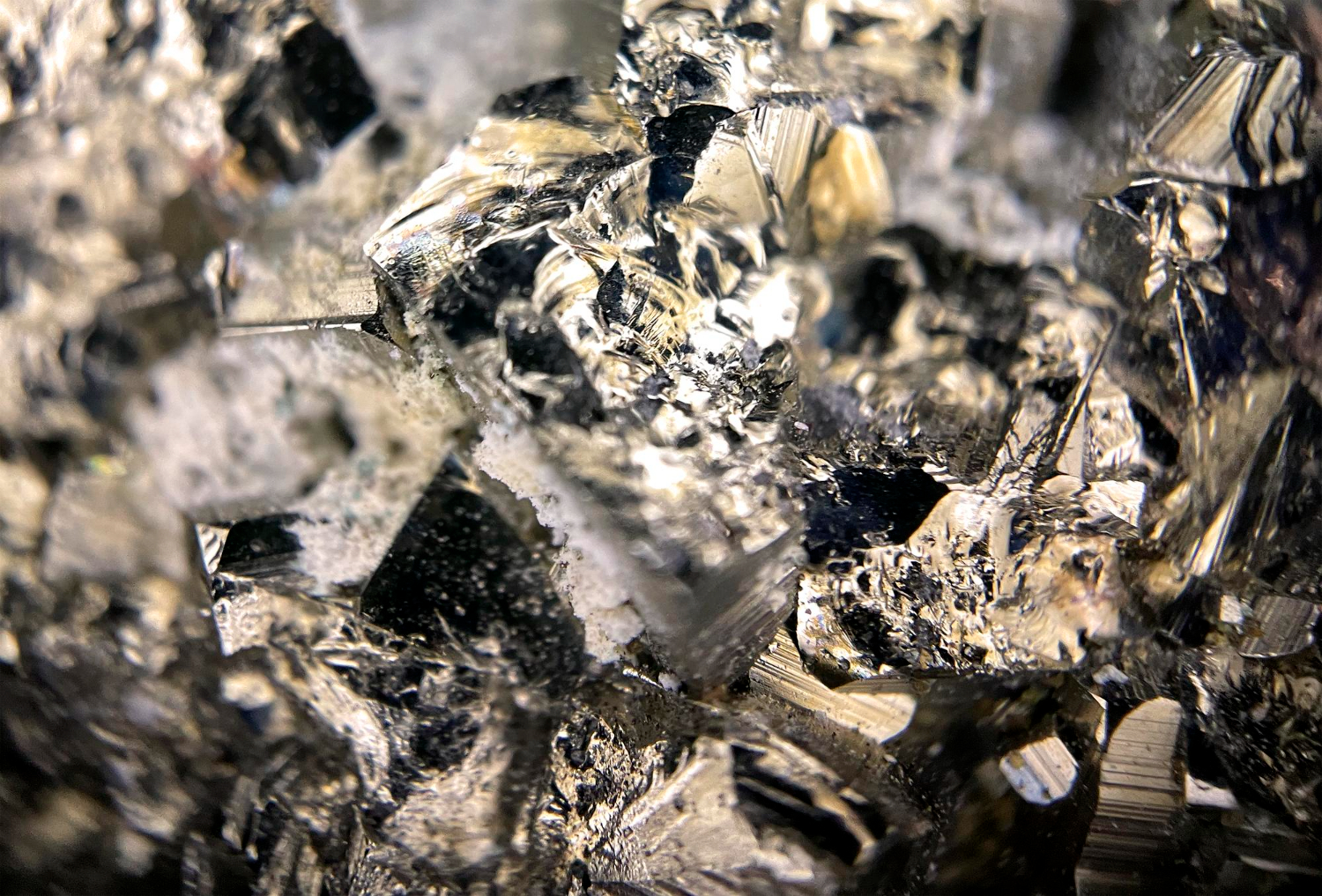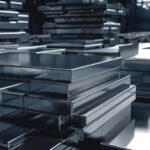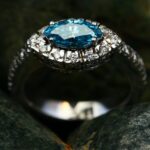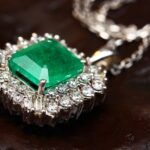Copper-silver alloys have been of considerable interest to metallurgists and materials scientists due to their unique combination of mechanical, electrical, and thermal properties. These alloys are widely used in various industrial applications, from electrical conductors to coinage and jewelry. One critical aspect of understanding the performance of copper-silver alloys is the study of their microstructure at different temperatures. In this article, we will delve into the microstructure of a copper-silver alloy at 775°C (1425°F). We will discuss the primary alpha and eutectic structures that characterize this microstructure and explore their significance.

-
Composition of Copper-Silver Alloys
Before delving into the microstructure, it’s essential to understand the composition of copper-silver alloys. These alloys are typically composed of copper (Cu) and silver (Ag) in various ratios, creating a range of properties. Common alloys include sterling silver (92.5% silver and 7.5% copper), which is widely used in jewelry and silverware, and phosphor bronze (6-20% tin and 0.01-0.35% phosphorus), used for its high corrosion resistance and spring properties.
-
Phase Diagram of Copper-Silver Alloys
The phase diagram of a material provides valuable information about its behavior at different temperatures and compositions. For copper-silver alloys, the phase diagram illustrates how the microstructure changes with temperature and composition. At 775°C (1425°F), we find ourselves in a region of particular interest.
At this temperature, the copper-silver alloy phase diagram reveals the existence of primary alpha (α) and eutectic structures. The primary alpha phase represents a solid solution of copper in silver, while the eutectic structure involves a mixture of the alpha phase and the silver-rich phase. The eutectic point on the phase diagram represents the composition at which the alloy transforms entirely into the eutectic structure upon cooling.
-
Primary Alpha Phase
The primary alpha phase is the dominant structure at 775°C in copper-silver alloys. This phase is characterized by a solid solution of copper atoms within the silver matrix. It is important to note that the solubility of copper in silver is temperature-dependent, and at elevated temperatures like 775°C, copper atoms can dissolve more readily in the silver lattice.
3.1. Solid Solution Behavior
Copper atoms are relatively smaller than silver atoms, leading to differences in atomic packing. However, the similarity in crystal structure between copper and silver (both having a face-centered cubic, or FCC, lattice) allows for the formation of a solid solution. Copper atoms replace some of the silver atoms in the lattice, resulting in a homogeneous, single-phase structure.
3.2. Influence on Mechanical Properties
The presence of primary alpha in copper-silver alloys at 775°C can significantly impact their mechanical properties. The alloy will exhibit enhanced ductility and toughness due to the solid solution formation, making it suitable for certain applications where these characteristics are desired.
-
Eutectic Structure
In addition to the primary alpha phase, the microstructure at 775°C also consists of the eutectic structure. The eutectic composition in copper-silver alloys occurs at approximately 72% silver and 28% copper. At this composition, the alloy transforms entirely into the eutectic structure upon cooling.
4.1. Eutectic Reaction
The formation of the eutectic structure is governed by a eutectic reaction, which occurs at a specific temperature and composition. In the case of copper-silver alloys, the eutectic reaction occurs at 775°C and results in the simultaneous formation of two distinct phases: a silver-rich phase and an alpha phase.
4.2. Significance of Eutectic Structure
The eutectic structure has unique properties that make it valuable in various applications. It is known for its fine lamellar microstructure, which enhances both the mechanical and thermal properties of the alloy. In particular, the eutectic structure in copper-silver alloys exhibits excellent electrical conductivity, making it ideal for electrical contacts and conductors.
-
The Role of Temperature in Microstructure
Temperature plays a pivotal role in determining the microstructure of copper-silver alloys. The phase diagram for this alloy system provides insights into the transitions that occur as the temperature changes.
5.1. Eutectic Temperature
The eutectic temperature is crucial for understanding the behavior of copper-silver alloys. At temperatures below 775°C, the eutectic structure becomes increasingly dominant as the alloy transforms entirely into this structure. Consequently, the microstructure’s composition, as well as the properties, will change accordingly.
5.2. Phase Transformation
The transformation from the primary alpha phase to the eutectic structure at lower temperatures involves the nucleation and growth of the silver-rich phase. This phase transition significantly affects the mechanical properties of the alloy.
-
Microstructure and Mechanical Properties
The microstructure of a copper-silver alloy at 775°C has a profound impact on its mechanical properties. Understanding this relationship is vital for optimizing the alloy for specific applications.
6.1. Ductility and Toughness
The primary alpha phase, present at 775°C, imparts ductility and toughness to the alloy. These properties are crucial for applications where the material is subjected to deformation or mechanical stress, such as in wire drawing and forming processes.
6.2. Electrical Conductivity
The eutectic structure, with its fine lamellar microstructure and enhanced electrical conductivity, makes copper-silver alloys an excellent choice for electrical applications. This microstructure minimizes the scattering of electrons, resulting in efficient electrical conduction.
-
Practical Applications
Copper-silver alloys at 775°C are used in a variety of practical applications due to their unique microstructure and properties.
7.1. Electrical Contacts
One of the primary applications of copper-silver alloys is in electrical contacts. The high electrical conductivity of the eutectic structure makes these alloys ideal for switches, relays, and connectors in various electrical and electronic devices.
7.2. Coinage
Historically, copper-silver alloys have been used in coinage due to their malleability and resistance to corrosion. The specific microstructure of the alloy can influence coin properties, such as durability and appearance.
7.3. Jewelry
Sterling silver, a copper-silver alloy with a silver content of 92.5%, is widely used in jewelry. The combination of the primary alpha phase and eutectic structure gives jewelry both strength and an attractive luster.
-
Future Research and Development
The study of the microstructure of copper-silver alloys is an ongoing field of research. Researchers are continually exploring ways to optimize the microstructure for specific applications, improve alloy performance, and reduce production costs.
8.1. Alloy Design
Advances in materials science have enabled the tailoring of microstructures to meet specific requirements. Future research will focus on designing copper-silver alloys with enhanced properties by optimizing the proportions of primary alpha and eutectic structures.
8.2. Additive Manufacturing
Additive manufacturing, including 3D printing, is another area where copper-silver alloys are being explored. Researchers aim to develop microstructures that maximize the benefits of 3D printing while maintaining desirable properties.
8.3. Environmentally Friendly Alloys
As environmental concerns become more significant, research efforts are directed toward developing copper-silver alloys with reduced or no hazardous elements. These “green” alloys aim to provide the same performance while being more sustainable.
-
Conclusion
The microstructure of a copper-silver alloy at 775°C is a fascinating subject of study in materials science and metallurgy. At this temperature, the alloy exhibits a combination of primary alpha and eutectic structures, each with its unique properties and advantages. The primary alpha phase contributes to ductility and toughness, while the eutectic structure enhances electrical conductivity. These properties make copper-silver alloys suitable for a range of applications, from electrical contacts to jewelry and coinage.
Understanding the interplay between temperature, composition, and microstructure is essential for tailoring copper-silver alloys to specific applications. Ongoing research and development in this field aim to optimize microstructures, explore additive manufacturing possibilities, and develop more environmentally friendly alloys. The future holds exciting prospects for copper-silver alloys and their microstructural engineering, which will continue to expand their use in various industries.





